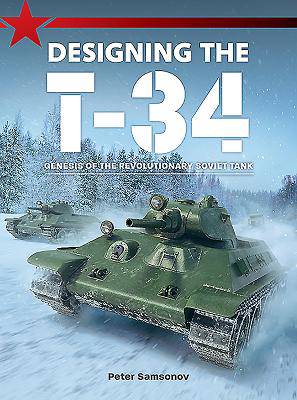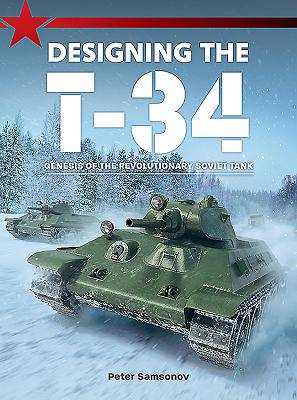
- Afhalen na 1 uur in een winkel met voorraad
- Gratis thuislevering in België vanaf € 30
- Ruim aanbod met 7 miljoen producten
- Afhalen na 1 uur in een winkel met voorraad
- Gratis thuislevering in België vanaf € 30
- Ruim aanbod met 7 miljoen producten
Zoeken
€ 18,45
+ 36 punten
Omschrijving
When the German army launched Operation Barbarossa - the invasion of the Soviet Union - on June 22, 1941, it was expecting to face and easily defeat outdated and obsolete tanks and for the most part it did, but it also received a nasty shock when it came up against the T-34.
With its powerful gun and sloped armour, the T-34 was more than a match for the best German tanks at that time and the Germans regarded it with awe. German Field Marshal von Kleist, who commanded the latter stages of Barbarossa, called it 'the finest tank in the world'.
Using original wartime documents author and historian Peter Samsonov, creator of the Tank Archives blog, explains how the Soviets came to develop what was arguably the war's most revolutionary tank design.
With its powerful gun and sloped armour, the T-34 was more than a match for the best German tanks at that time and the Germans regarded it with awe. German Field Marshal von Kleist, who commanded the latter stages of Barbarossa, called it 'the finest tank in the world'.
Using original wartime documents author and historian Peter Samsonov, creator of the Tank Archives blog, explains how the Soviets came to develop what was arguably the war's most revolutionary tank design.
Specificaties
Betrokkenen
- Auteur(s):
- Uitgeverij:
Inhoud
- Aantal bladzijden:
- 92
- Taal:
- Engels
Eigenschappen
- Productcode (EAN):
- 9781911658306
- Verschijningsdatum:
- 6/02/2020
- Uitvoering:
- Paperback
- Formaat:
- Trade paperback (VS)
- Afmetingen:
- 185 mm x 249 mm
- Gewicht:
- 226 g

Alleen bij Standaard Boekhandel
+ 36 punten op je klantenkaart van Standaard Boekhandel
Beoordelingen
We publiceren alleen reviews die voldoen aan de voorwaarden voor reviews. Bekijk onze voorwaarden voor reviews.








